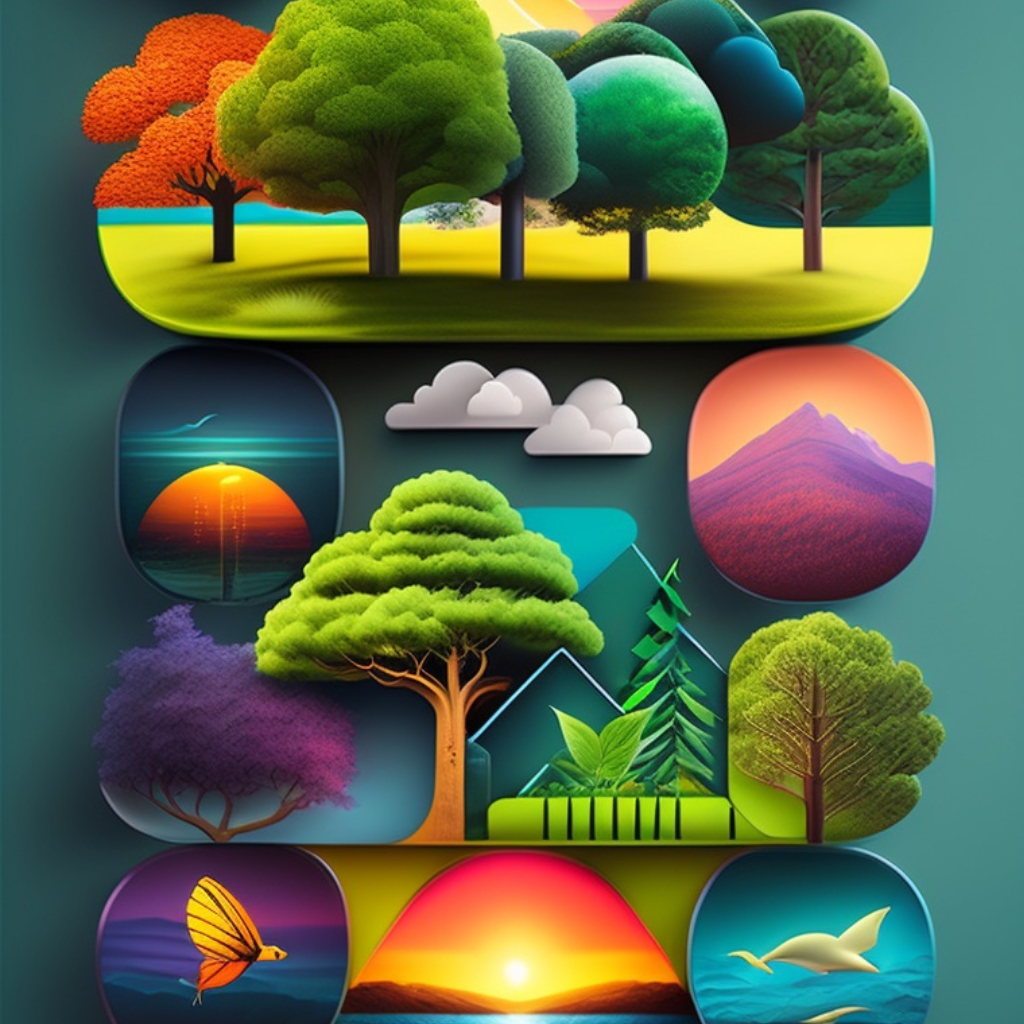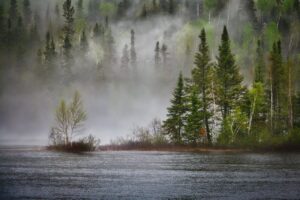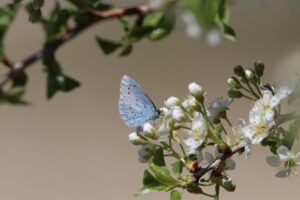Hold up! Don’t let your eyes glaze over yet. You might think the question “what is biodiversity?” is the equivalent of someone yammering on about quantum physics or the history of the semicolon. But I promise, it’s more riveting than the last season of your favorite show. Biodiversity is the elixir of life, the symphony of existence, the… oh well, you get the idea. It’s important, okay?
Unraveling the Concept of Biodiversity
Biodiversity is like a sprawling novel, filled with myriad characters, plots, and subplots. It’s the tale of life on Earth, from the most microscopic bacteria living in the most inhospitable environments (talk about survival instinct!) to the majestic blue whales cruising the ocean like gigantic, free-spirited nomads. And just like any good novel, losing even one character can dramatically shift the story, sometimes with a sad, disastrous ending.
The Colorful Spectrum of Species
Picture the countless species on Earth as unique pieces in a mammoth jigsaw puzzle. A puzzle so vast, even your puzzle-enthusiast grandma might raise her eyebrows at it. Now imagine you’re on the brink of completing it, and you realize there’s one piece missing. Annoying, isn’t it? But more than just being annoying, a missing piece in the biodiversity puzzle can have devastating impacts, shaking up the balance of ecosystems and making them vulnerable to collapse.
Ecosystems: The Web of Life
Now, consider ecosystems as different chapters of our grand novel. Each chapter, from sun-baked deserts to lush rainforests, coral reefs to alpine meadows, introduces new characters and a new backdrop. Just like plot twists, interactions between these characters drive the narrative forward, creating an intricate web of life that is critical for our survival and wellbeing.
Genetic Diversity: The Blueprint of Nature
Genetic diversity is like a bunch of enthusiastic chefs constantly experimenting in the kitchen. It’s the reason why your pet dog, Fido, doesn’t look like your neighbor’s dog, Rex, even though they’re both golden retrievers. Genetics cook up a range of variations within each species, enabling them to adapt to changes, resist diseases, and sustain populations.
Biodiversity: A Symphony of Benefits
Biodiversity: Our Environmental Stabilizer
Imagine Earth as a giant circus tent and biodiversity as the tent poles. Just as the poles hold the tent in place, biodiversity holds our planet in balance, regulating climate, filtering water, cycling nutrients, pollinating crops, and controlling pests – basically running the show behind the scenes. It’s the tireless production crew that keeps the performance going smoothly, despite curveballs from nature and humans.
The Economic Powerhouse of Biodiversity
At first glance, the connection between biodiversity and the economy might seem as strange as putting ketchup on ice cream. But surprisingly, they’re closely intertwined. Biodiversity is the bedrock of industries like agriculture, forestry, and tourism. Think about it, without diverse crop varieties, our plates would be as boring as the beige paint on your office wall. And without the stunning landscapes and intriguing wildlife, where would all the nature-loving globetrotters go?
Biodiversity as the Wellspring of Health
Biodiversity is like the world’s most comprehensive medicine cabinet. From painkillers derived from willow bark to cancer drugs from periwinkle plants, nature has been an endless source of healing. Moreover, diverse ecosystems regulate disease transmission and keep pesky pests in check. So, the next time you swat away a mosquito, remember – healthy biodiversity might be the best repellent.
Biodiversity: The Ultimate Superhero
In the grand saga of Earth, biodiversity is the unsung superhero. It fights off villains like pollution by absorbing and breaking down harmful substances. It counteracts climate change by storing vast amounts of carbon, effectively acting as a safety net in our ongoing battle against global warming. If there’s an environmental Justice League, biodiversity surely wears a cape.
Biodiversity on the Brink: Current Threats
Habitat Destruction: Nature’s Nightmare
Our planet’s habitats are being chopped, burned, drained, and degraded like a potato in a French fry factory. And just like fries rapidly disappearing from your plate, habitats are being lost at an alarming rate. This loss, my friends, is the biggest threat to biodiversity. When homes disappear, the residents do too.
Climate Change: The Silent Enemy
Climate change is like a magic trick, but the kind that leaves you feeling queasy instead of amazed. As global temperatures rise, species are forced to move to cooler habitats. But not all can adjust, leading to a tragic vanishing act. Meanwhile, oceans are becoming more acidic than your morning cup of Joe, spelling trouble for marine life.
Overexploitation: The Never-ending Hunger
Ever heard the saying, “The eyes are bigger than the stomach”? That pretty much sums up our relationship with natural resources. Overfishing, overhunting, and overharvesting are depleting populations faster than they can recover. If we continue to chow down on our planet’s resources like there’s no tomorrow, we might indeed face a future devoid of the wonderful diversity of life we enjoy today.
Hope Amid Despair: Safeguarding Biodiversity
Conservation: Biodiversity’s Shield
In the face of doom and gloom, conservation offers a glimmer of hope. It’s like a steadfast shield, protecting species and ecosystems from the relentless barrage of threats. From creating protected areas to initiating captive breeding programs, conservation efforts strive to ensure that our biodiversity novel continues to be written for generations to come.
Legislation: Our Legal Lifeline
In the courtroom of nature, legislation plays the judge, laying down the law for biodiversity protection. It’s like drawing a boundary line in a playground squabble – “Hey, you can’t cross this line or else!” Legislation not only helps to protect biodiversity by regulating activities that harm it, but also encourages the use of sustainable practices. Let’s take a global tour and examine a few shining examples.
The United States: The Endangered Species Act
Passed in 1973, the Endangered Species Act (ESA) is a key piece of US legislation aimed at protecting threatened and endangered species and their habitats. It’s like a VIP pass for species on the brink, giving them access to a full range of protective measures and recovery plans.
Brazil: The Forest Code
The Brazilian Forest Code of 2012, while controversial in some respects, was designed to protect the country’s precious forests and the incredible biodiversity they harbor. It’s the rulebook that guides land use and acts as a guardrail against deforestation.
India: The Wildlife Protection Act
India’s Wildlife Protection Act of 1972 is a comprehensive piece of legislation for the protection of plants, animals, and their habitats. It’s like the ‘guardian of the wild’, establishing protected areas and controlling the hunting and trade of wild species.
Australia: The Environment Protection and Biodiversity Conservation Act
Down under, the Environment Protection and Biodiversity Conservation Act (EPBC) of 1999 is Australia’s foremost environmental law. This legislative tool seeks to protect the country’s unique biodiversity and promote ecologically sustainable development.
European Union: Birds and Habitats Directives
In Europe, the Birds Directive (1979) and the Habitats Directive (1992) form the cornerstone of the EU’s biodiversity policy. Together, they create a network of protected sites, known as Natura 2000, offering a safe haven for Europe’s most valuable and threatened species and habitats.
By learning from these examples and implementing effective environmental laws, nations across the globe can contribute significantly towards safeguarding biodiversity. In the end, our biodiversity novel doesn’t have to end with a tragedy. Instead, it can continue with hope, action, and resilience, ushering in a brighter, sustainable future for all.
Sustainable Practices: The Future Blueprint
Sustainability is like that well-meaning friend who advises you to “live within your means.” It urges us to use resources wisely and consider the impact of our actions on future generations. By adopting sustainable practices in farming, fishing, forestry, and everyday living, we can reduce our footprint and give nature a much-needed breather.
Alright, buckle up because we’re jumping into our time machine to explore the future of biodiversity conservation. Sustainability is that voice of reason in your ear that says, “Hey buddy, maybe don’t use that plastic bag for your single apple.” It’s all about harmony, about taking what we need without robbing Mother Nature blind.
The Promise of Permaculture
Imagine a farm that mimics a natural ecosystem, where crops and animals coexist and support each other in a thriving, productive system. That’s permaculture. Already in use in many parts of the world, it’s set to play a major role in future biodiversity conservation. This isn’t just agriculture – it’s agriculture with a Ph.D. in Sustainability!
The Vertical Farming Revolution
Skyscrapers for plants, anyone? With population growth and urbanization, vertical farming is on the rise. It’s like fitting an entire farm into an apartment block, growing food indoors, vertically, and often hydroponically. This not only saves space but also reduces the impact on natural habitats. Who knew farming could reach such ‘high’ standards?
Rewilding the World
Bringing back wolves to manage deer populations, allowing forests to regrow, and restoring wetlands – are examples of rewilding. The buzzword in conservation circles, rewilding, aims to restore ecosystems to their natural state, letting nature do what it does best. Think of it as giving Mother Nature the reins and saying, “You’ve got this, boss.”
Sustainable Urban Planning
We’re reimagining cities with biodiversity in mind, designing urban spaces that not only cater to us humans but also our non-human neighbors. Green roofs, urban gardens, wildlife corridors – these aren’t sci-fi concepts anymore. Cities of the future will be buzzing – and not just with traffic!
Technological Innovations
Technology, too, is joining the fight. From AI for tracking wildlife to blockchain for ensuring sustainable supply chains, the future of biodiversity conservation is digital. Tech isn’t just for selfies and cat videos; it’s a formidable ally in protecting biodiversity.
Public Awareness and Education
Knowledge is power, and public awareness is the future of biodiversity conservation. Educational programs and citizen science projects are fueling a wave of global awareness about biodiversity’s importance. As more folks get onboard, we’re shifting from the ‘me’ mentality to the ‘we’ mindset.
In the grand story of life on Earth, our actions today write the chapters of tomorrow. Let’s ensure our tale of biodiversity isn’t a cliffhanger with a disappointing ending, but a saga of hope, resilience, and sustainable prosperity. Now, who’s ready to turn the page?
Conclusion
So, what is biodiversity? It’s not just a mouthful of a term or a chapter in a science textbook. Biodiversity is the intricate, mesmerizing story of life on Earth, with all its characters and plots. It’s the symphony of benefits we derive from nature, the superhero silently safeguarding our planet. Yet, our relentless march of progress threatens this complex web of life.
But it’s not all gloom and doom. Like a plot twist in the eleventh hour, we have the power to change the narrative. Through conservation, legislation, and sustainable practices, we can turn the tide. After all, our actions today will determine if our grand novel of biodiversity gets a sequel or ends up as a one-volume tragedy.
And in case you’re wondering, biodiversity isn’t just out there in the wilderness. It’s in your backyard garden, in the park down the street, in the bird feeder outside your window. It’s all around us, and within us too. It’s a part of who we are, and we are a part of it.
So next time you come across a bug in your house, don’t just squish it right away. Take a moment to appreciate its role in the big picture. After all, even the smallest characters can have the biggest impacts. And who knows, you might just find yourself fascinated, awestruck, or maybe even a bit humbled. After all, it’s a wild, wonderful world out there. And we’re all in it together.
FAQs
- What does biodiversity mean? Biodiversity is the variety of life on Earth, encompassing the multitude of species, their genetic variations, and the complex ecosystems they form.
- Why is biodiversity important to humans? Biodiversity is vital to human survival and well-being. It provides us with food, medicines, clean air, and water. It regulates climate, controls pests, pollinates our crops, and offers recreational, aesthetic, and spiritual values.
- What are the main threats to biodiversity? The main threats to biodiversity include habitat destruction, climate change, overexploitation of species, pollution, and invasive species.
- How can we protect biodiversity? We can protect biodiversity through various ways like setting up protected areas, implementing conservation programs, enacting strong environmental laws, promoting sustainable practices, and raising awareness about biodiversity.
- Can individual actions make a difference in biodiversity conservation? Absolutely! Every action counts. You can contribute to biodiversity conservation by adopting sustainable living practices, reducing waste, planting native plants, supporting conservation organizations, and advocating for biodiversity-friendly policies.




